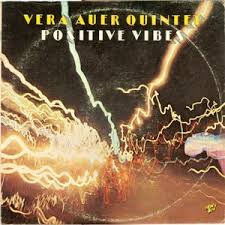
Daily Dose Of Jazz…
Vera Auer was born on April 20, 1919 in Vienna, Austria, the grandniece of violinist Leopold Auer. She learned classical piano and later accordion. In 1948, along with guitarist Attila Zoller formed a combo. She later added vibraphone to her list of instruments and teamed with Helmuth Zukovits on bass and Franz Mikuliska on drums.
In 1950 the group performed and recorded under her own name and appeared on the Austrian radio AG RAVAG. 1951 saw the band The Audience Award for best combo at the taking was the band at the Vienna Jazz Competition. This was followed by her first tour abroad in Turkey and West Germany, where they also played with Friedrich Gulda.
Vera would go on to play with Joe Zawinul, Hans Salomon and Toni Stricker in her band. By 1954 she was playing mainly in West Germany due to poor working conditions for jazz musicians in Austria. She accompanied Donald Byrd, Lucky Thompson and Art Taylor. In 1956 she performed with Jean-Louis Chautemps at the German Jazz Festival.
In 1959 after marrying Brian Boucher and moved to the United States the next year. She attended the Lenox School of Jazz studying under Gunther Schuller, John Lewis and George Russell. She played with Dave Burns, Cal Massey, J. J. Johnson, Mal Waldron, Ted Curson, Zoot Sims, Walter Perkins and Richard Williams. Around 1970, she recorded as a leader an LP titled Positive Vibes with her quintet, which wasn’t released until 1977 and still amazingly fresh sounds.
She continued to perform into the Nineties on the Jazz Mobile and Jazz Vespers of St. Peter’s Church in New York City. In 1984 the American Public Broadcasting Service Program dedicated a one-hour portrait of her. On August 2, 1996 vibraphonist Vera Auer passed away in Newsane, Vermont.
More Posts: vibraphone
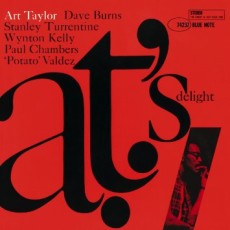
Daily Dose Of Jazz…
Arthur S. Taylor, Jr. was born in New York City on April 6, 1929 and as a teenager he joined a local Harlem band that featured Sonny Rollins, Jackie McLean and Kenny Drew. By the late Forties and into the Fifties he was playing in the bands of Howard McGee, Coleman Hawkins, Buddy DeFranco, Bud Powell, George Wallington, Art Farmer, Gigi Gryce and Donald Byrd.
After leaving Byrd he formed his own group, Taylor’s Wailers but between 1957 and 1963 he toured with Byrd, recorded with Miles Davis and John Coltrane, performed with Thelonious Monk and was a member of the original Kenny Dorham Quartet of 1957.
In 1963 he moved to Europe, where he lived mainly in France and Belgium for 20 years, playing with local groups and jazz musicians Johnny Griffin, John Bodwin, and Woody Shaw while he was in Paris. He returned to the States to help his ailing mother and continued freelancing. In 1993 Art organized a second band called Taylor’s Wailers.
He recorded five albums as a leader and 116 albums as a sideman with some of the most influential jazz musicians of the day – Gene Ammons, Dorothy Ashby, Benny Bailey, Kenny Burrell, Paul Chambers, Sonny Clark, James Clay, Jimmy Cleveland, Arnett Cobb, Pepper Adams, Walter Davis Jr., Red Garland, Eddie “Lockjaw” Davis, Continuum, Matthew Gee, Benny Golson, Dexter Gordon, Slide Hampton, Bennie Green, Tiny Grimes, Elmo Hope, Frank Foster, Erne Henry, Milt Jackson, Thad Jones, Clifford Jordan, Duke Jordan, Ken McIntrye, Lee Morgan, Oliver Nelson, Cecil Payne, Horace Silver, Dizzy Reece, Jimmy Smith, Mal Waldron, Julian Priester, Charlie Rouse, Kai Winding, J.J. Johnson, Toots Thielemans, Randy Weston, Sonny Stitt, Jack McDuff, Stanley Turrentine, and the list goes on and on.
Art Taylor helped define the sound of modern jazz drumming and authored Notes and Tones, a book based on his interviews with other musicians. He passed away in Manhattan’s Beth Israel Hospital on February 6, 1995.
![]()
More Posts: drums
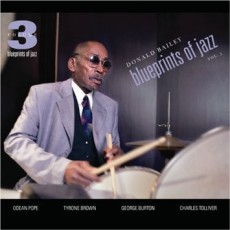
Daily Dose Of Jazz…
Donald Orlando Bailey was born on March 26, 1933 in Philadelphia, Pennsylvania into a musical family. His father Morriswas a drummer, his brother Morris Jr a saxophonist and his nephew Victor is a bassist.
Bailey got his big break in the jazz world and is probably best known as the drummer in the Jimmy Smith Trio from 1956 to 1964. He also performed and recorded with The Three Sounds on the Blue Note Records label.
Known in the jazz world as Duck Bailey, he performed with John Coltrane in their early Philly years. He worked as a sideman for Sarah Vaughan, Carmen McRae, Hampton Hawes, Sonny Rollins, Freddie Hubbard, Jimmy Rowles, Blue Mitchell, Red Mitchell, Roy Ayers, George Braith, Harold Land, Jack Wilson, Kenny Burrell, Grant Green, Buster Williams and Bobby Hutcherson among others.
In the mid 70s, he moved to Japan where he lived for six years and in 1978, released an album called So in Love for Trio Records. The session featured Hideo Ichikawa, Hideyuki Kikuchi, Yoshio Ikeda, Takaaki Nishikawa and Toshihiko Ogawa. This date featured Bailey playing harmonica, received rave reviews and is a sought after jazz collectible. His last project Blueprints of Jazz Vol.3 featuring Donald Bailey had him in the company of Charles Tolliver on trumpet, pianist George Burton, and tenor saxophonist Odean Pope issued in 2009.
Settling in Montclair, California, he performed around San Francisco Bay area until his late 70s. Drummer Donald Bailey, known as The King of Organ Trio Drummers, passed away in Montclair, California on October 15, 2013 at the age of 80.
![]()
More Posts: drums
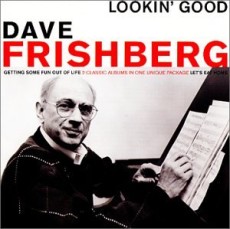
Daily Dose Of Jazz…
David Frishberg was born March 23, 1933 in Saint Paul, Minnesota. Resisting learning classical piano as a boy, he developed an interest in blues and boogie-woogie by listening to recordings of Pete Johnson and Jay McShann. As a teenager he played in the house band at the Flame in St. Paul where Art Tatum, Billie Holiday and Johnny Hodges appeared. After graduating from the University of Minnesota as a journalism major in 1955, he spent two years in the Air Force.
In 1957, Dave moved to New York City where he played solo piano at the Duplex in Greenwich Village. He first became known for his work with Carmen McRae, Ben Webster, Gene Krupa, Bud Freeman, Eddie Condon, Al Cohn and Zoot Sims.
He later found celebrity writing and performing his own, frequently humorous, songs, including his most famous My Attorney Bernie, and favorites I’m Hip, lyrics only, in collaboration with Bob Dorough, Blizzard of Lies, Do You Miss New York, Peel Me a Grape, Quality Time, Slappin’ the Cakes on Me, and Van Lingle Mungo, the lyrics of which entirely consist of the names of old-time baseball players.
Citing songwriter Frank Loesser as an influence, Frishberg has also worked strictly as a lyricist on a number of occasions collaborating with Johnny Mandel, Alan Broadbent, Al Cohn, Blossom Dearie, David Shire, Julius Wechter, Dan Barrett, Bob Brookmeyer, Gerry Mulligan and Johnny Hodges.
Dave’s tunes have been performed and/or recorded by Blossom Dearie, Rosemary Clooney, Shirley Horn, Anita O’Day, Michael Feinstein, Irene Kral, Diana Krall, Stacey Kent, John Pizzarelli and Mel Torme, among other.
He is also noted for composing the music and lyrics for I’m Just A Bill, the song about the forlorn legislative writ in the ABC Schoolhouse Rock series, as well as Walkin’ on Wall Street, a song that describes how the stock market works, and $7.50 Once a Week, a song about saving and balancing a budget.
Pianist, vocalist, composer and lyricist Dave Frishberg has recorded three albums as a leader, one solo project and has sat in the sideman chair with Jim Goodwin and Rebecca Kilgore on the Arbor Records label.
![]()
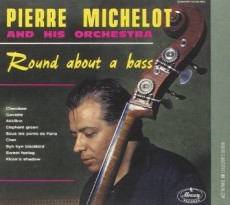
Daily Dose Of Jazz…
Pierre Michelot was born on March 3, 1928 in Saint-Denis, Seine-Saint-Denis, Paris, France. He studied piano from 1936 until 1938 when he switched to bass at the age of sixteen.
Throughout his career he performed and recorded with Rex Stewart, Coleman Hawkins, Django Reinhardt, Stephane Grappelli, Don Byas, Thelonious Monk, Lester Young, Dexter Gordon, Stan Getz, Bud Powell, Kenny Clarke, Zoot Sims, Dizzy Gillespie, Chet Baker and numerous others.
Michelot was a member of the Jacques Loussier Trio, known for the Play Bach album series. In 1957 he recorded the landmark album Afternoon In Paris with John Lewis and Sacha Distel Septet. As a leader he recorded Round About A Bass with an orchestra on the Uni Jazz France label.
Together with Miles Davis, he was responsible for the critically acclaimed soundtrack of Louis Malle’s film Ascenseur pour l’echafaud and also appeared as an unnamed bass player in the movie Round Midnight.
In later life, bebop and hard bop double bassist Pierre Michelot suffered from Alzheimer’s disease and passed away on July 3, 2005.
More Posts: bass


